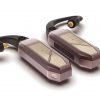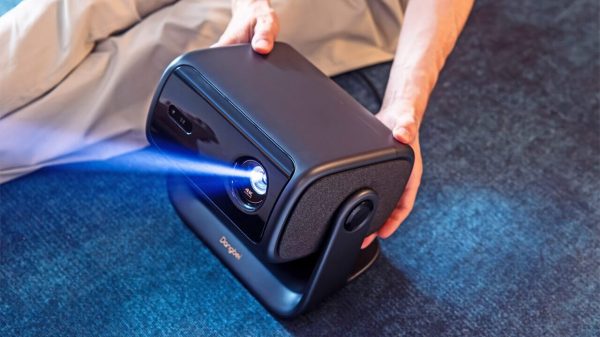Handheld Devices Sink 53.2% During Fourth Quarter But Protracted Decline Appears to Be Slowing, Says IDC
The handheld device market, already in the throes of unit decline, failed to post a seasonal sequential increase in shipments during the fourth quarter. According to IDC’s Worldwide Handheld QView, vendors shipped a total of 683,004 units in the fourth quarter, marking a 53.2% decrease from the same quarter a year ago and a 6.0% decrease from the previous quarter. For the full year, vendors shipped a total of 3.0 million units worldwide, down 44.3% from the 5.5 million units shipped during all of 2006.
“In most mature markets, the fourth quarter typically brings an increase in shipments to meet holiday demand, but this was not the case for the handheld device market,” said Ramon Llamas, senior research analyst with IDC’s Mobile Devices Technology and Trends team. “User interest has shifted away from handheld devices to others that can perform the same tasks, but include features that better meet user demand. The best example of this is the converged mobile device, or smartphone, that can do personal information management and other handheld device functions, but can also make phone calls, making it a better alternative for most consumers.”
With the handheld device market posting its sixteenth consecutive quarter of year-on-year decline, Llamas does not believe that the market will disappear altogether. “If you look at each quarter during 2007, some of the leading vendors have seen their shipment volumes start to level off. This gives some hope that the market may be finding a sustainable level. Plus, vendors are still introducing new models and reaching first time users. If the market was about to disappear, then neither of these trends would be taking place today.”
Top Five Handheld Device Vendors
Palm has had the same models, including the TX, Z22, and Tungsten E2, on the market for more than two years, but not even the lack of a new device has kept the company from the No. 1 position worldwide. Throughout 2007, Palm has steadily increased its quarterly shipments, but shipment volumes remain below 2006 levels.
HP was the clear No. 2 vendor in the handheld device market, and introduced two new devices to its product portfolio: the 211 Enterprise Handheld and 111 Classic Handheld. Despite the heady decline from a year ago, shipments during each quarter of 2007 remained relatively stable from one quarter to the next.
Mio continued to slide throughout the year and, after closing the gap to as little as 60,000 units in the first quarter, the company now trails No. 2 vendor HP by more than 130,000 units. Navigation has become a standard feature on all of Mio’s handheld devices, but this pits its handhelds up against the company’s competing line of personal navigation devices.
Fujitsu-Siemens was the only vendor among the top five to post positive year-on-year growth, although the improvement was the result of shipping approximately one thousand more units over the previous year. Rather than take a multi-regional approach like other vendors, the company focused solely within EMEA with its Pocket LOOX devices.
Sharp posted the largest year-on-year decline among the leading vendors, but shipped enough of its Zaurus-branded units into Japan to retain the No. 5 slot worldwide and the No. 1 slot in Japan. Within its home region, Sharp accounted for more than half of all handheld device shipments, but as in the rest of the world, shipments of handheld devices there have dropped precipitously.
Top Five Handheld Device Vendors, Q4 2007 Results
| Vendor | 4Q07 | 4Q07 | 4Q06 | 4Q06 | 4Q07/4Q06 |
| Shipments | Market Share | Shipments | Market Share | Growth | |
| Palm | 343,500 | 50.3% | 582,000 | 39.9% | -41.0% |
| HP | 188,500 | 27.6% | 364,000 | 25.0% | -48.2% |
| Mio | 57,914 | 8.5% | 129,027 | 8.8% | -55.1% |
| Fujitsu-Siemens | 23,124 | 3.4% | 22,297 | 1.5% | 3.7% |
| Sharp | 17,250 | 2.5% | 53,800 | 3.7% | -67.9% |
| Others | 52,716 | 7.7% | 307,602 | 21.1% | -82.9% |
| Total | 683,004 | 100.0% | 1,458,726 | 100.0% | -53.2% |
Source: IDC Worldwide Handheld QView, February 11, 2008
Top Five Handheld Device Vendors, Full Year 2007 Results
| Vendor | 2007 | 2007 | 2006 | 2006 | 2007/2006 |
| Shipments | Market Share | Shipments | Market Share | Growth | |
| Palm | 1,281,050 | 42.0% | 1,982,000 | 36.2% | -35.4% |
| HP | 754,800 | 24.8% | 1,210,000 | 22.1% | -37.6% |
| Mio | 376,139 | 12.3% | 442,893 | 8.1% | -15.1% |
| Fujitsu-Siemens | 130,534 | 4.3% | 103,491 | 1.9% | 26.1% |
| Dell | 108,175 | 3.5% | 490,000 | 9.0% | -77.9% |
| Others | 396,849 | 13.0% | 1,245,169 | 22.7% | -68.1% |
| Total | 3,047,547 | 100.0% | 5,473,553 | 100.0% | -44.3% |
Source: IDC Worldwide Handheld QView, February 11, 2008
Notes:
- Vendor shipments are branded shipments and exclude ODM sales for all vendors.
- Handheld devices are pocket-sized, either pen or keypad-centric, and are capable of synchronizing with desktop or laptop computers. Handheld devices are designed to access and manage data including office documents, multimedia, and games.
- Handheld devices do not include telephony but may include wireless capabilities (like Bluetooth and WiFi) that enable Internet access and text communication. These devices feature evolved operating systems or applications environments such as the Palm OS, Windows Mobile Pocket PC, Linux, or other proprietary platforms with the ability to download, run applications, and store user data beyond PIM capabilities.
IDC’s Worldwide Handheld QView provides device vendors, software developers, service providers, and component suppliers with timely and accurate information on the worldwide handheld market. The program provides quarterly measurements of worldwide unit shipments and vendor market shares.
To purchase this document, call IDC’s Sales hotline at 508-988-7988 or email sales@idc.com.
About IDC
IDC is the premier global provider of market intelligence, advisory services, and events for the information technology, telecommunications, and consumer technology markets. IDC helps IT professionals, business executives, and the investment community make fact-based decisions on technology purchases and business strategy. More than 900 IDC analysts provide global, regional, and local expertise on technology and industry opportunities and trends in over 90 countries worldwide. For more than 43 years, IDC has provided strategic insights to help our clients achieve their key business objectives. IDC is a subsidiary of IDG, the world’s leading technology media, research, and events company. You can learn more about IDC by visiting http://www.idc.com.
All product and company names may be trademarks or registered trademarks of their respective holders.























